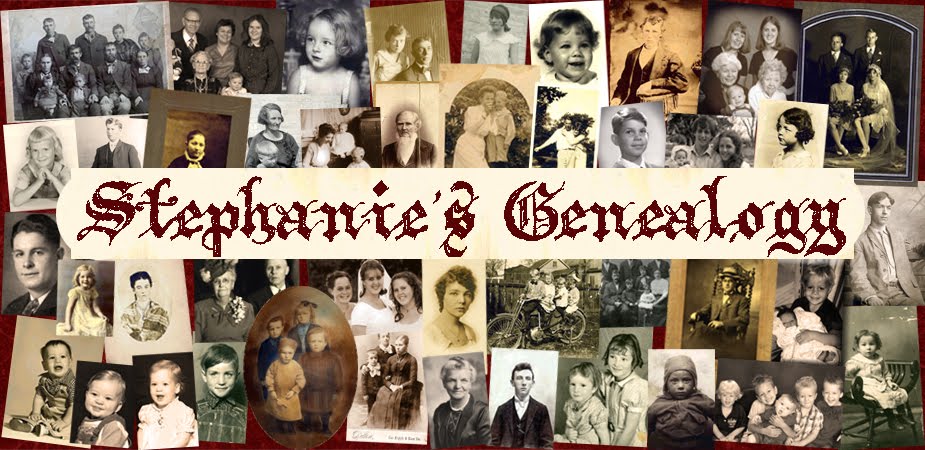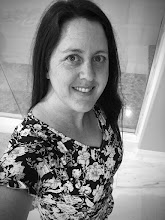
I wrote a post last year about our really cool research path that led my mom & I to discovering the existence & then discovering details about the life of Theresia Ott, the little sister of my 2nd great grandmother Anna Marie Ott Spohr: http://stephsgenealogy.blogspot.com/2017/09/the-twin-mystery.html. We believe Theresia was born somewhere between the Ott family's home town in Bohemia and the port in Bremen, Germany where the family boarded the ship 'SS Weser' and immigrated to America, where they ended up settling for several years in Cincinnati, Ohio. The ship's passenger list says that Theresia was 10 months old when they traveled to America. In my previous post about discovering Theresia, I mentioned that the Cincinnati City Directories played a vital role in confirming that Theresia was indeed part of our family, and confirming that the death record we found for her at age 8 was in fact for "our" Theresia Ott. Well, the City Directories have played a vital role in identifying Theresia for us again, but this time in a different way.
I was looking through some old photos the other day from a few boxes of pictures that originally came from the home of my grandparents, Beverly Frances Monk & Carl John Spohr Jr. I noticed a little tintype photo of a child in a straw hat. Like many of the photos in these boxes, there is no name written on the back to tell us who the person in the photograph is, and we had no idea who the child was. (We weren't even sure if it was a little girl or boy, since young girls & boys back then both wore gowns until they were old enough to be potty trained and until the boys were old enough to fasten the latches on their britches). But unlike many of the other photos in this collection, this one did have writing on the back. It's not too uncommon to find an old photo that might have a name and/or address on the back which doesn't necessarily refer to the person or people shown in the photo -- it may list the information of the person who ordered the photo from the photographer, or sometimes of the person who someone was sending the photograph to. I was intrigued when I noticed that it said "Mrs. Ott" on the back, but it's not the first time we've found a photo with the name of one of our ancestors on the back and still not had any idea who the photo was of.
On the back of this photo it tells the name & address of the photographer in Cincinnati, and then it says: "Date Nov 4, Name Mrs. Ott, Address 45 Miami St City, Size 14 x 17 Bust." So, we knew that our Ott family lived in Cincinnati, and so far we haven't come across any indication that any other Ott relatives came to the United States. So that narrows it down to two Ott women that we know of: my 2nd great grandmother, Anna Marie Ott Spohr, and her mother, Maria Anna Strunz Ott (who went by Anna). Since Anna Marie's married name was Spohr, she would have been referred to as either Miss Ott or Mrs. Spohr. So we figured Mrs. Ott on the back of this photo was my 3rd great grandmother Anna Strunz Ott. And we knew from our previous City Directory research that Anna lived at 45 Miami Street. We also figured that this photo may have been of someone significant to Anna, since she was ordering a rather large 14 x 17 bust print.
I wondered if it was one of Anna's children, hoping that my hunch that it could possibly be Theresia might prove correct. Or I wondered if it could possibly have been of Anna's youngest son, Louis Christopher Ott, who was about 4 years younger than Theresia. (I thought it was unlikely that it was one of Anna's older two surviving children, since it was taken in Cincinnati, and appeared to be of a child around 3 or 4 years old, and her older children were born in Bohemia and would have been too old to be the child in this photo by the time they arrived in America. Oh, and I wondered if the straw hat might give us a clue to the gender of the child, but a Google search for photos from the late 1800s of children wearing straw hats only proved that straw hats were not worn exclusively by one gender. Interestingly, I found no other examples of anyone wearing a straw hat with a similar striped pattern under the brim).
I got out the only other photo that we know of that shows any of Anna's children when they were young:
 |
| This photo, taken in Cincinnati, shows Anna Strunz Ott with her youngest son Louis Christopher Ott, and her older son Franz Joseph "Frank" Ott. |
My mom, dad, and I compared the faces of Anna's boys and the unknown child in the tintype photo. We all agreed that this child had the same look in the eyes as these boys, and could definitely be a sibling, or possibly a photo of either of these boys at a younger age.
I was thinking that this photo could either have been of Theresia, or of the younger brother Louis, who both lived in Cincinnati when they were around 3 or 4 years old. But my Dad pointed out that the photo could have potentially been reprinted in the Cincinnati photo studio from a negative, which would make it possible that it could have been a picture of one of Anna's older children that was originally taken before they lived in Cincinnati.
But last week I happened to start reading a book about photography during the Civil War , which started with a brief introduction overviewing the history of different types of early photography. I went back and found that passage again, which said, ". . . Bostonian James A. Cutting patented the ambrotype in 1854: collodion glass negatives, which, when backed with black paper, varnish, or metal, were transformed into positive images. Ambrotypes soon supplanted daguerreotypes in popularity, since they could be viewed more easily; daguerreotypes had to be tilted at just the right angle in order to make a clear positive image visible. Yet another variation -- the ferrotype or tintype -- recorded images on sheets of iron that had been coated with a light-sensitive emulsion. Ambrotypes and tintypes, like the earlier daguerreotypes, could not be reproduced. In that sentimental Victorian age, these one-of-a-kind images of loved ones were treated as revered icons. . . . All three of these direct-image techniques [daguerreotypes, ambrotypes, & tintypes] recorded a mirror image of the sitter or scene; during the Civil War it was not uncommon for soldiers to compensate for this distortion by reversing their weapons and accoutrements, while photographers sometimes used paint to 'touch out' the backward letters on buttons and military beltplates. The collodion process permitted photographers one other alternative, which by the late 1850s had supplanted all others in the public's love affair with the camera. From glass negatives, contact prints could be made on paper that had been coated with albumen. . . . Albumen prints were neither reversed nor unique; indeed, a potentially limitless number of prints could be made from a single negative." Now I'm no expert in early photography, but this photo we have is definitely printed on metal, and I believe it is a tintype. If that's true, from the description in this book it seems like this rules out the possibility of this photograph being reprinted from a negative years after it was originally taken.
So the next step was to determine when this photo was taken. This is where the City Directories came in handy again. With our two most likely hypotheses being that the photo was of Theresia or Louis, and estimating that the child in the photo was somewhere around 4 years old, we calculated that Theresia would have been 4 in 1884, and Louis would have been 4 in 1888. We turned to the city directory to see who was living at 45 Miami Street in those years. In 1888 a tailor named Henry Duesing was living at this address. But in 1884 a carpenter named F. Joseph Ott was living there. Franz Joseph "Frank" Ott was the husband of Anna Strunz Ott. This family definitely lived there in exactly the correct year for the photograph to be their 4 year old daughter Theresia. We're convinced that this photo is of her.
And last night I did a fun little project, photoshopping all the scratches and dust off this photo so we could get a better idea of how the original may have looked. (I'm not entirely satisfied with how her chin turned out, but that's about as good as I can get right now, since that part of the original tintype was entirely scratched off. And without any other photos of Theresia to compare to, I just did the best I could with that).
Before:
After:








No comments:
Post a Comment